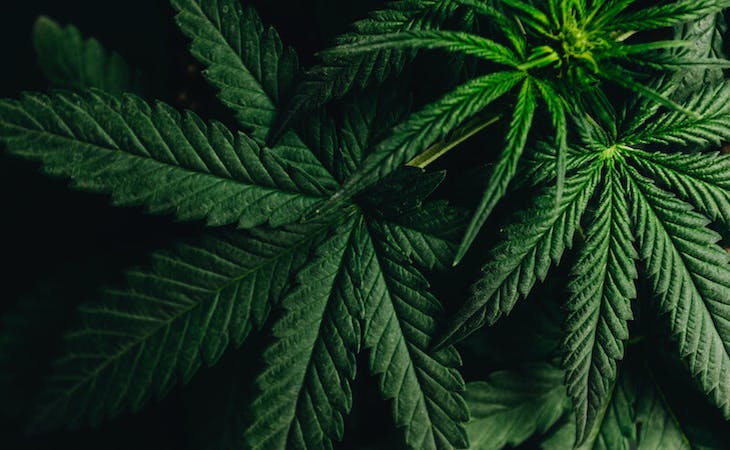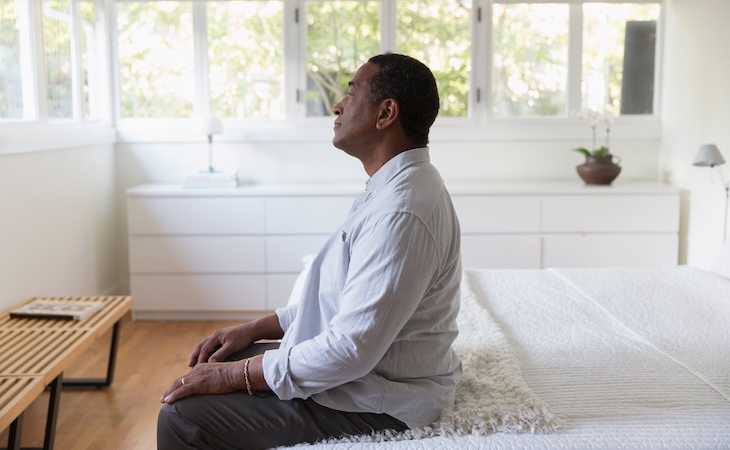Cannabis use is becoming mainstream throughout more and more of the country. In fact, it’s currently legal for medical use in 33 states and recreational use in 11 states. It makes sense then that many consumers are curious about the trend and how it can benefit their health and well-being—especially when it comes to sleep. Here’s what experts want you to know about the complex relationship between marijuana and sleep.
Cannabis and sleep
Though multiple variables influence how cannabis impacts your sleep, experts and research see the cannabis plant as a potentially powerful natural solution for supporting quality rest.
Research (like this Journal of Palliative Medicine study) suggests that in addition to anxiety and pain, insomnia is one of the most common reasons people use cannabis.
The plant seems to help. According to recent research published in the Journal of Psychoactive Drugs, 84% of surveyed adults who tried cannabis to support their sleep found it to be either “very” or “extremely” helpful.
The exact relationship between cannabis and sleep, though, depends on a number of specific factors.
Compounds in cannabis that affect sleep
As research on cannabis and its effects on our health continues to develop, experts have identified several different compounds in the plant responsible for its influence on sleep.
Cannabinoids
Perhaps the most studied (and talked about) compounds in cannabis are cannabinoids. According to sleep specialist Michael Breus, PhD, the cannabis plant contains hundreds of different types of cannabinoids.
These cannabinoids are believed to interact with the body’s endocannabinoid system, which helps the body’s internal environment remain stable and balanced despite external stressors, explains Jacqueline Montoya, MD, owner of GreenMedMD and chief medical officer of CBDfit.
Two, in particular, have been studied for their impact on sleep: CBD and THC.
CBD: CBD (a.k.a. cannabidiol) is a non-psychoactive cannabinoid in cannabis known for its ability to support sleep.
“CBD may have therapeutic potential for the treatment of insomnia and is currently being studied for its effects on REM sleep behavior disorders and excessive daytime sleepiness,” says Montoya. “Although we don’t know exactly how CBD induces sleep at a cellular level, we believe its interaction with the endocannabinoid system and serotonin receptors are responsible for its sedative effects.”
THC: THC (a.k.a. tetrahydrocannabinol), though perhaps best known for its psychoactive effects, also influences sleep.
“THC mimics the neurotransmitter anandamide and has direct sedative effects on the brain,” says Montoya. “It may help a person feel comfortable, and therefore allow them to fall asleep comfortably.”
However, while THC may decrease sleep latency (the amount of time it takes to fall asleep), it could possibly impair sleep quality long-term, Montoya says. Research—like one Sleep Medicine Reviews paper—has implicated THC in suppressing REM, the fifth stage of the sleep cycle.
That said, though, THC heightens the function of CBD, so small amounts of it may enhance CBD’s sleep-boosting effects, Montoya says. (This is known as the “entourage effect.”)
Terpenes
Health-promoting essential oils found in plants, terpenes may also contribute to cannabis’s effects on sleep. According to Breus, they work by further supporting the actions of cannabinoids.
Though the cannabis plant contains around 200 terpenes, two in particular—myrcene and borneol—are known for their calming, soothing, sleep-promoting effects, says Montoya.
Indica vs. sativa: different cannabis strains and sleep
Two different strains of cannabis plants—indica and sativa—have long been associated with different effects in the body.
Indica strains of cannabis are short, stocky, quick-growing, high in CBD, and found in cooler environments, says Montoya. They’re generally associated with a relaxing, sleepy effect.
Sativa strains, meanwhile, are tall, thin, slower-growing plants that are lower in CBD and native to hotter, drier climates, Montoya says. They’re traditionally known for a more energized cannabis experience.
Today, most strains of cannabis available are hybrids of sativa and indica, with one being more dominant, explains Montoya.
She generally recommends higher-CBD, lower-THC indica strains of cannabis to support sleep. In addition to the actual strain, cannabis’ cannabinoid content also significantly impacts its effects. (Learn whether CBN, a type of cannabis, can help you sleep better.)
Side effects of cannabis to keep in mind
Because of THC’s ability to suppress REM sleep (and dreaming along with it), Breus urges caution before using high-THC cannabis to support sleep. The use of high-THC cannabis may also contribute to feelings of grogginess the next day.
“Since a cannabis plant can be made up of such a wide variety of compound combinations, it can take some experimenting to find the genetic strain which works best for you,” says Jen Palmer, naturopathic doctor and director of education for Charlotte’s Web CBD. “In addition to the variability in the plants, people also have unique biochemistries and react differently to cannabis’ compounds.”
Given the complexity of cannabis (and its impact on sleep) and our constantly evolving understanding of this medicinal plant, Breus, Montoya, and Palmer recommend working closely with a trained physician if you want to give it a try yourself.
“Using more than you need can contribute to side effects and dependence,” says Montoya.
Does nicotine impact your ability to get a good night’s sleep? Read our guide on how vaping affects sleep.




